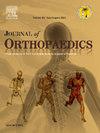Lower extremity osteotomies for limb preservation: Indications, outcomes, and risk factors
IF 1.5
Q3 ORTHOPEDICS
引用次数: 0
Abstract
Objectives
To delineate the key factors associated with treatment success or failure for patients undergoing lower extremity osteotomies to address a spectrum of lower extremity joint and limb deformities at an Integrated Limb Preservation Center (ILPC).
Methods
Design: Retrospective cohort study.
Setting: Level I Academic Trauma Center.
Patient selection criteria: Patients of the ILPC with at least 1-year of follow-up data regarding previous surgery to correct trauma-or developmental-related deformities between January 1, 2005, and October 1, 2022.
Outcome measures and comparisons: Patients were categorized first based on etiology (developmental vs. traumatic) and then based on the nature of deformity (joint, limb, nonunion). Treatment data, demographics including age, sex, body mass index (BMI), tobacco use history, insurance status, marital status, mental health history, and history of comorbidities, concurrent procedures, and post-operative infection, revision, reoperation, and bone healing status were extracted from the medical record and compared. Treatment failure was defined as conversion of the limb preservation surgery (ies) to amputation of any type.
Results
139 patients were included for analysis; 47 patients in the developmental-related cohort, and 92 patients in the trauma-related cohort. The treatment success rate in terms of preserving the affected limb for patients undergoing lower extremity osteotomies was 94.7 % for the developmental-related cohort and 92.4 % for the traumatic-related cohort. 57.4 % of patients in the developmental-related cohort and 59.8 % of patients in the trauma-related underwent unplanned secondary procedures Concurrent osteomyelitis debridement (p = 0.01) and postoperative infection (p = 0.049) were the only factors measured significantly associated with conversion to amputation.
Conclusions
Patients undergoing osteotomies at an ILPC to address developmental-related or trauma-related joint and/or limb deformities experienced high short-term success (>90 %) with respect to preserving the affected limb. However, 56 % of patients required subsequent unplanned surgeries and improvements in PROMs were only statistically significant in patients with trauma-related deformities.
Level of evidence
III.
保留肢体的下肢截骨术:适应症、结果和风险因素
目的 探讨在综合肢体保护中心(ILPC)接受下肢截骨术治疗下肢关节和肢体畸形的患者治疗成功或失败的关键因素:设计:回顾性队列研究:患者选择标准:患者选择标准:2005年1月1日至2022年10月1日期间,在综合肢体保护中心接受过手术矫正创伤或发育相关畸形且随访数据至少1年的患者:首先根据病因(发育性与创伤性)对患者进行分类,然后根据畸形的性质(关节、肢体、未愈合)对患者进行分类。从病历中提取治疗数据、人口统计学数据,包括年龄、性别、体重指数(BMI)、吸烟史、保险状况、婚姻状况、精神健康史、合并症史、并发症、术后感染、翻修、再次手术和骨愈合状况,并进行比较。治疗失败的定义是保肢手术转为任何类型的截肢手术。在接受下肢截骨手术的患者中,发育相关队列中保留患肢的治疗成功率为 94.7%,创伤相关队列中保留患肢的治疗成功率为 92.4%。发育相关队列中 57.4% 的患者和创伤相关队列中 59.8% 的患者接受了计划外二次手术,并发骨髓炎清创(p = 0.01)和术后感染(p = 0.049)是唯一与截肢明显相关的测量因素。然而,56%的患者随后需要进行计划外手术,只有创伤相关畸形患者的PROMs改善具有统计学意义。
本文章由计算机程序翻译,如有差异,请以英文原文为准。
求助全文
约1分钟内获得全文
求助全文
来源期刊

Journal of orthopaedics
ORTHOPEDICS-
CiteScore
3.50
自引率
6.70%
发文量
202
审稿时长
56 days
期刊介绍:
Journal of Orthopaedics aims to be a leading journal in orthopaedics and contribute towards the improvement of quality of orthopedic health care. The journal publishes original research work and review articles related to different aspects of orthopaedics including Arthroplasty, Arthroscopy, Sports Medicine, Trauma, Spine and Spinal deformities, Pediatric orthopaedics, limb reconstruction procedures, hand surgery, and orthopaedic oncology. It also publishes articles on continuing education, health-related information, case reports and letters to the editor. It is requested to note that the journal has an international readership and all submissions should be aimed at specifying something about the setting in which the work was conducted. Authors must also provide any specific reasons for the research and also provide an elaborate description of the results.
 求助内容:
求助内容: 应助结果提醒方式:
应助结果提醒方式:


